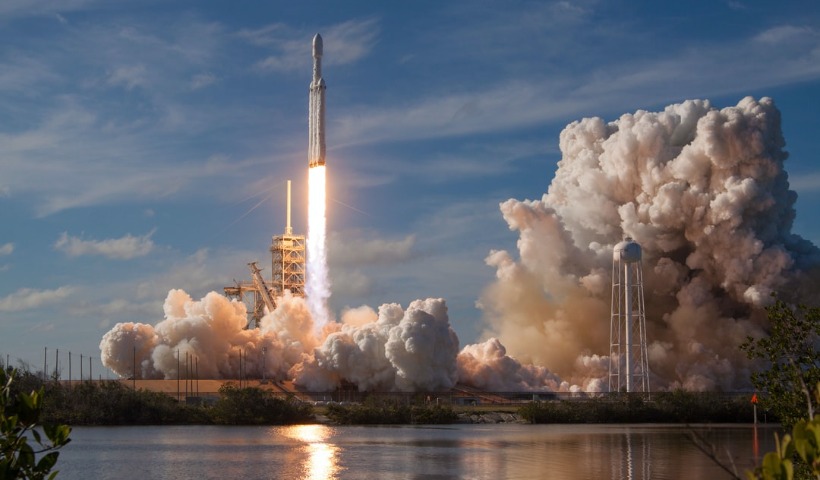NASA just hauled its massive heavy-lift rocket to a launchpad at Kennedy Space Center for some crucial testing ahead of its first moon mission.
It’s been a long time since the U.S. space agency had a rocket of this magnitude, capable of sending large payloads — astronauts and cargo — into deep space. Not only is the Space Launch System, or SLS, built to travel to the moon, it’s expected to one day put millions of miles on the odometer during the first crewed flight to Mars. Robotic scientific journeys to Saturn and Jupiter also could be in its future.
Here are some key facts about the megarocket as it prepares for its maiden voyage, the Artemis I mission to lunar orbit, which could come as soon as May 2022 (though, in typical NASA fashion, this might happen later this summer).
Post Contents
1. It’s the only rocket that can send the Orion spacecraft to the moon
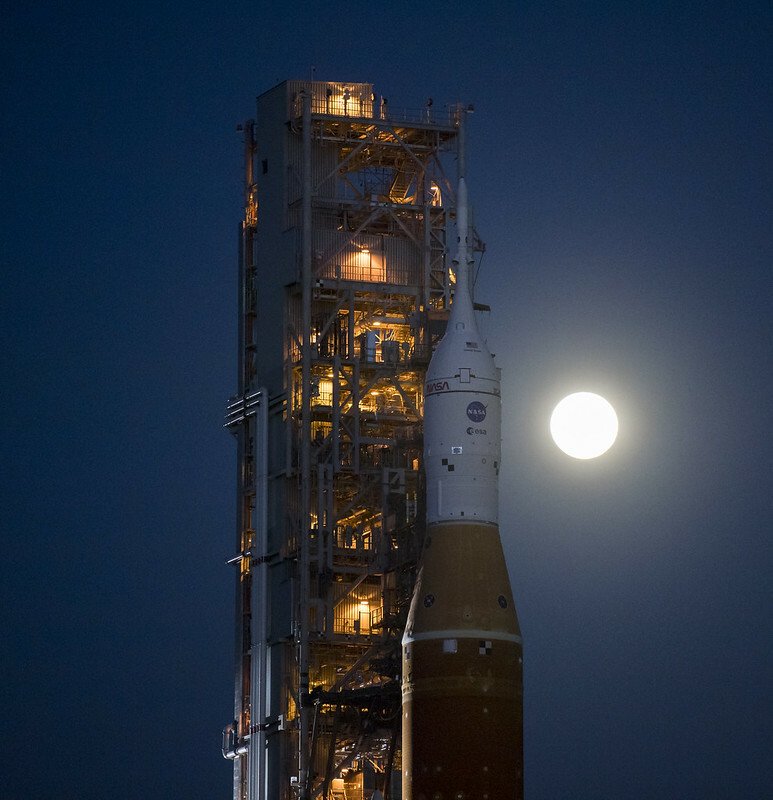
NASA’s SLS is the only rocket that can send the Orion capsule directly to the moon.
Credit: NASA / Aubrey Gemignani
SLS is the only rocket capable of sending the Orion spacecraft, a capsule that sits atop the stack of boosters, to the moon and beyond. Think of the Orion capsule as the RV of the sky: It’s not only a ride but a habitat for up to four astronauts. In order to travel long journeys into deep space, people will need to be able to eat, sleep, work, and pass time aboard for months.
For Artemis I, an uncrewed Orion will fly thousands of miles past and around the moon. Three weeks after liftoff, the capsule will splash down in the Pacific Ocean. The purpose of the inaugural Artemis mission is to test its ability to safely reenter Earth’s atmosphere and drop into the correct spot for the Navy to recover.
2. It’s not the size, but the thrust, that counts
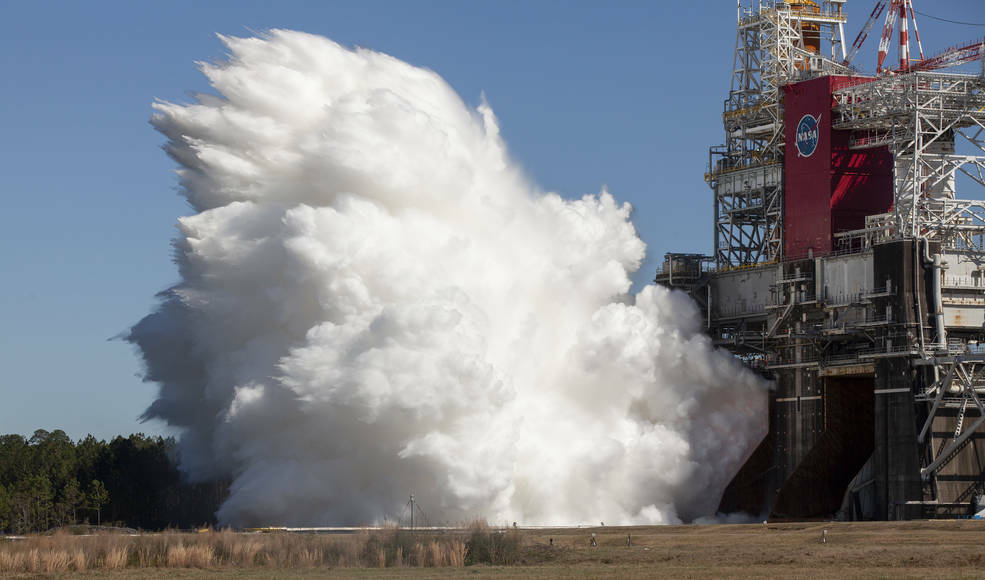
In a NASA test, the four main rocket engines fired for eight minutes in March 2021 and generated 1.6 million pounds of thrust.
Credit: NASA / Robert Markowitz
Standing 322-feet high, the megarocket is taller than the Statue of Liberty and London’s Big Ben. Compare that to the 184-foot Space Shuttle rocket, which blasted astronauts to the space station in low-Earth orbit.
Despite towering over its predecessor, SLS is actually a bit shorter than Saturn V, the last rocket NASA used to take people into deep space. The Apollo-era rocket was 41 feet taller.
But the new rocket is demonstrably more powerful. SLS will produce 8.8 million pounds of thrust — the oomph an engine provides for the rocket — during liftoff and ascent. That’s 15 percent more than Saturn V offered. Future configurations of the new rocket will pack even more punch.
The four main SLS engines, fueled with 700,000 gallons of cryogenic, or super cold, propellant, will produce a thrust powerful enough to keep eight Boeing 747s aloft.
3. The megarocket is state-of-the-art 1980s technology
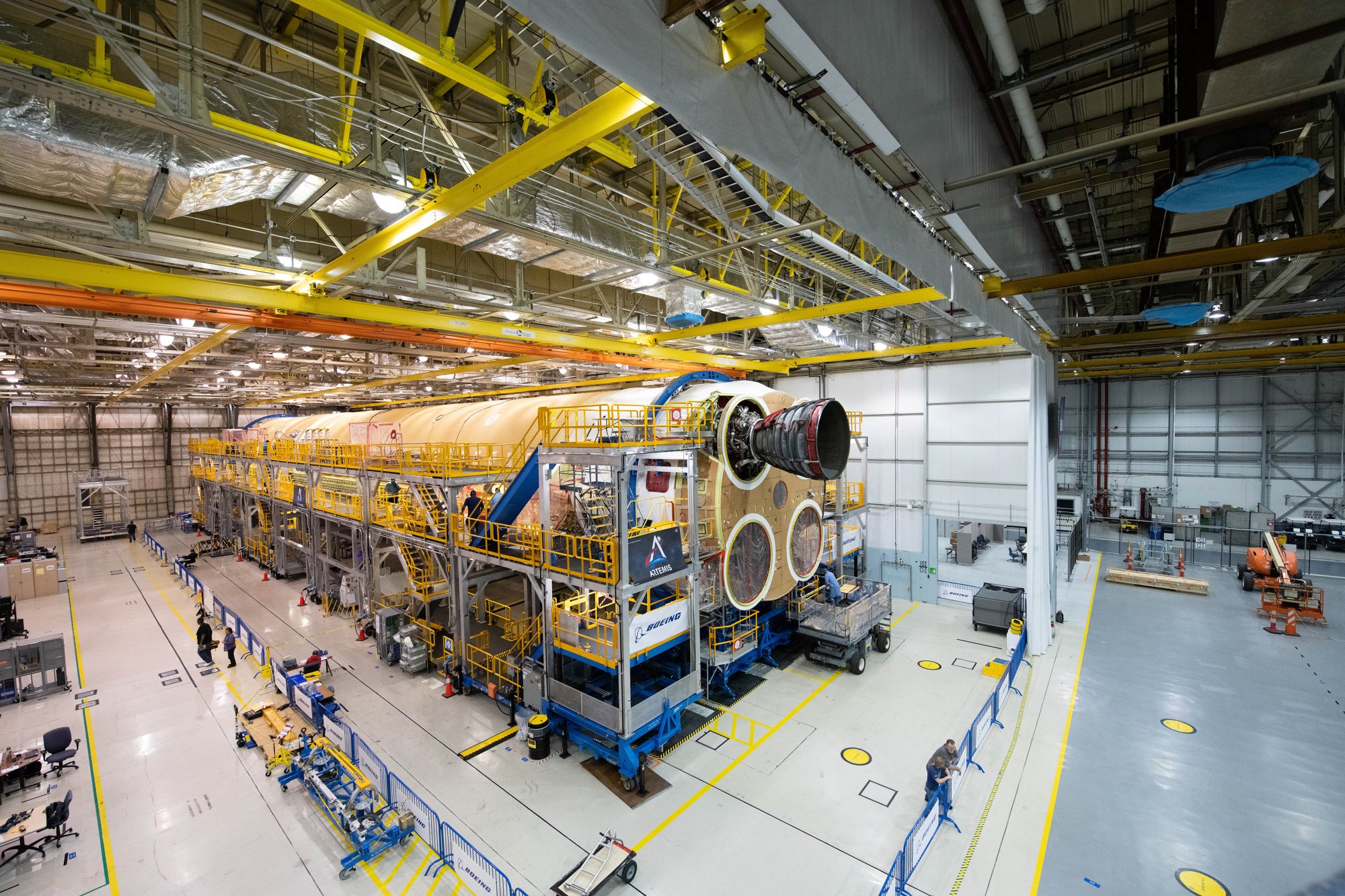
Engineers and technicians at NASA’s Michoud Assembly Facility in New Orleans attaching the first of four RS-25 engines to the core stage of NASA’s Space Launch System (SLS) rocket.
Credit: NASA / Jude Guidry
SLS is literally and figuratively built upon the Space Shuttle legacy. NASA incorporated major components of the shuttle, which operated between 1981 and 2011, into the new rocket.
Engineers swapped the iconic space plane out for either a cargo or Orion crew spacecraft. The central orange core is an elongated shuttle external fuel tank, powered by four shuttle engines. Rather than reusing those engines, though, NASA will ditch them in the ocean. Twin shuttle solid rocket boosters will assist the core during the first phase of the flight, providing 75 percent of the initial skyward push.
It’s not all old tech, though. NASA upgraded some hardware and used new tooling and manufacturing techniques to get the job done. Some parts have been modernized to meet the needs of deep-space travel, but Congress didn’t allow the space agency to start completely from scratch to design the latest megarocket.
4. Sorry, environment. It’s not reusable.
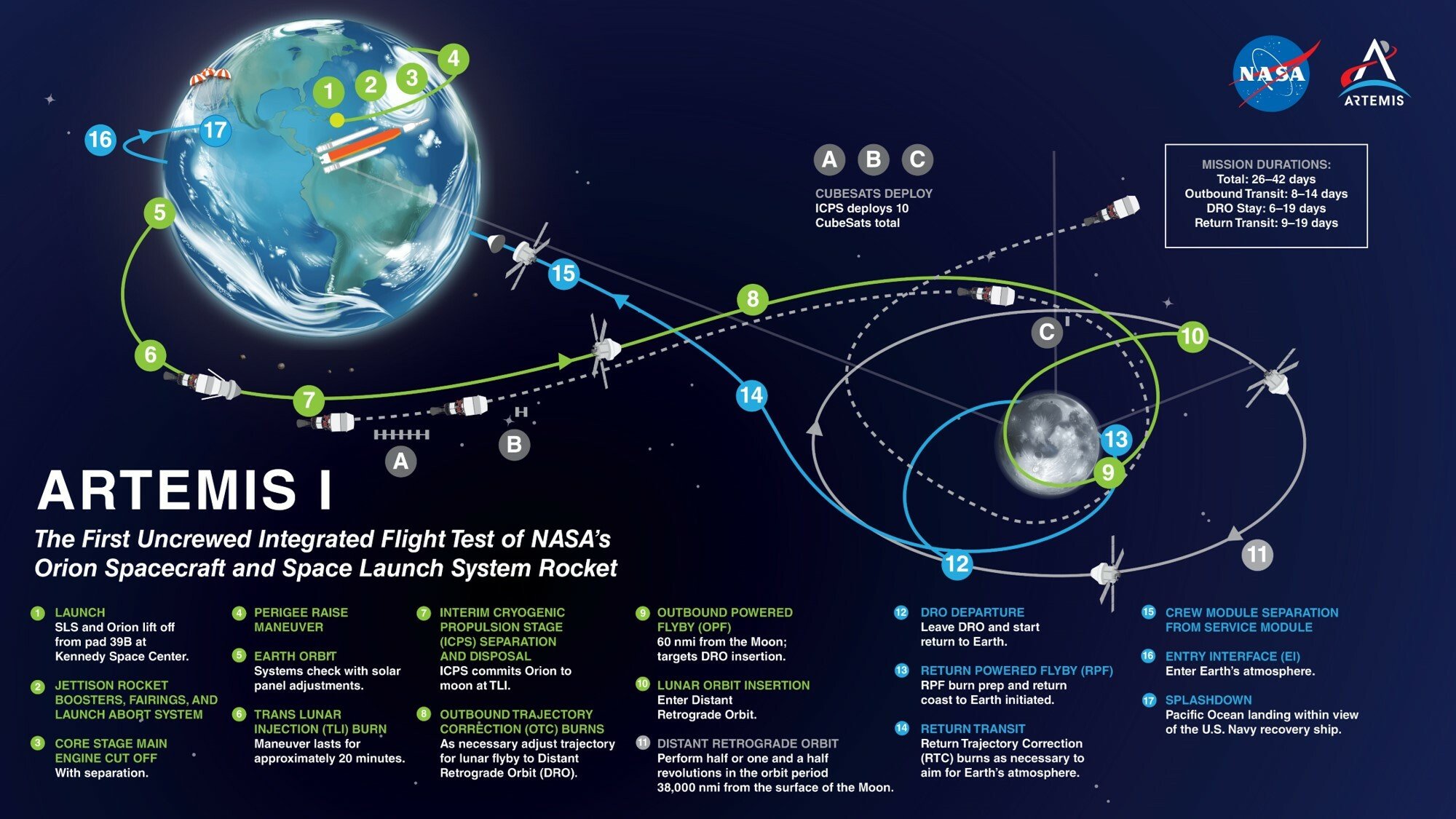
During Artemis I, the uncrewed Orion spacecraft will launch on the most powerful rocket in the world and travel farther than any spacecraft built for humans has ever flown.
Credit: NASA
Remember that the new moon rocket is built with shuttle parts. NASA designed the shuttle to haul astronauts and supplies back and forth to the space station, which orbits some 250 miles from Earth.
In order to modify the rocket so that it could travel much deeper into space, engineers needed to lighten the load. After all, the moon is roughly 239,000 miles from Earth, around 1,000 times the distance of the space station.
Engineers gutted the Shuttle’s reusable boosters, parachutes, reserve fuel, and landing sensors from the design — the system that allowed the agency to use it again. This gave NASA back about 2,000 pounds of extra weight capacity for lunar trips. Doing so will help Orion reach 24,500 mph, the speed needed to send it on a moon-bound trajectory.
But this means SLS will need new rockets for each mission.
At least the engine exhaust is relatively “clean,” superheated water vapor. The engines are fed liquid hydrogen and liquid oxygen fuel. And NASA upgraded the booster insulation from asbestos to rubber materials, also an environmental improvement.
5. The megarocket has an all-American price tag
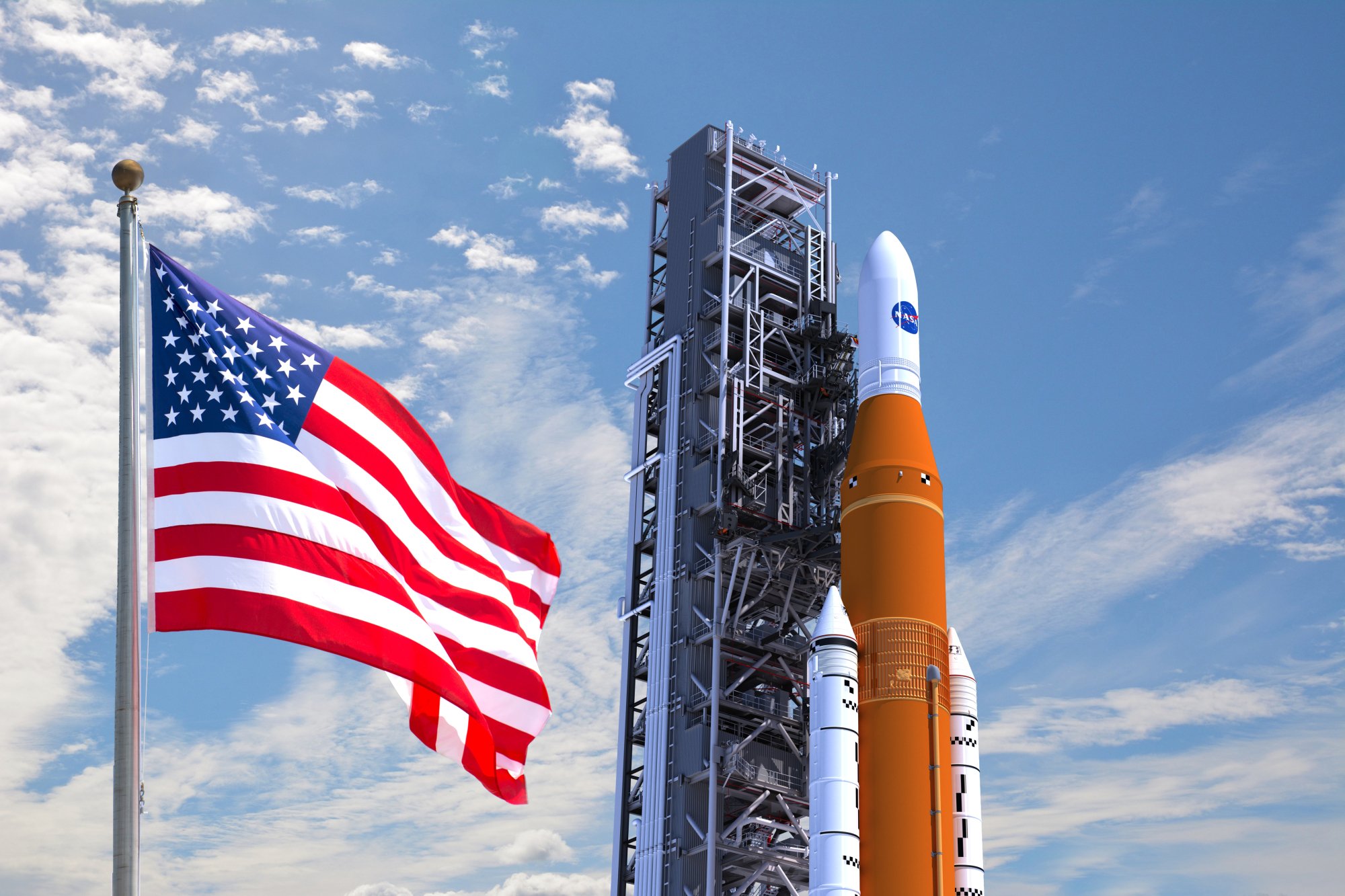
NASA’s Artemis missions will cost about $4.1 billion per launch, according to an inspector general report.
Credit: NASA
Many folks at NASA and in Congress refer to SLS as “the nation’s rocket,” the “flagship rocket,” or “America’s rocket.” It’s considered a national asset, not unlike a bespoke aircraft carrier for the military, intended to serve a national interest: exploring the solar system.
That’s the major reason it’s thought to be the most expensive rocket ever built. While the burgeoning commercial spaceflight sector may soon prove it can build a more cost-efficient space transportation system, affordability was never the priority for SLS.
When Congress passed a NASA spending bill in 2010, it directed the space agency to build the rocket, even specifying what parts to use, which companies to contract, and what kind of business arrangements to leverage. At that time, amid the Great Recession, those lawmakers sought to support thousands of jobs in their districts. Artemis is not just a space program, but a jobs program.
About 3,800 suppliers in all 50 states have contributed to the rocket and Orion projects, said Tom Whitmeyer, NASA’s deputy associate administrator for common exploration systems.
“When you see this rocket, it’s not just a piece of metal that’s going to sit at the pad. It’s a whole bunch of people, rocket scientists throughout this country, throughout our agencies, that have worked on this.”
“It’s a symbol of our country and our communities, our aerospace economy, and what’s in partnership behind it,” he said on a call with reporters in March. “When you see this rocket, it’s not just a piece of metal that’s going to sit at the pad. It’s a whole bunch of people, rocket scientists throughout this country, throughout our agency, that have worked on this.”
At a March congressional committee, Inspector General Paul Martin, who serves as the space agency watchdog for the federal government, estimated each launch would cost $4.1 billion, with half of the tab attributed just to SLS. For perspective, that’s about one-fifth of the entire NASA budget. By 2025, Martin expects NASA will have spent $93 billion on the Artemis program.
6. The rocket is the ultimate Transformer
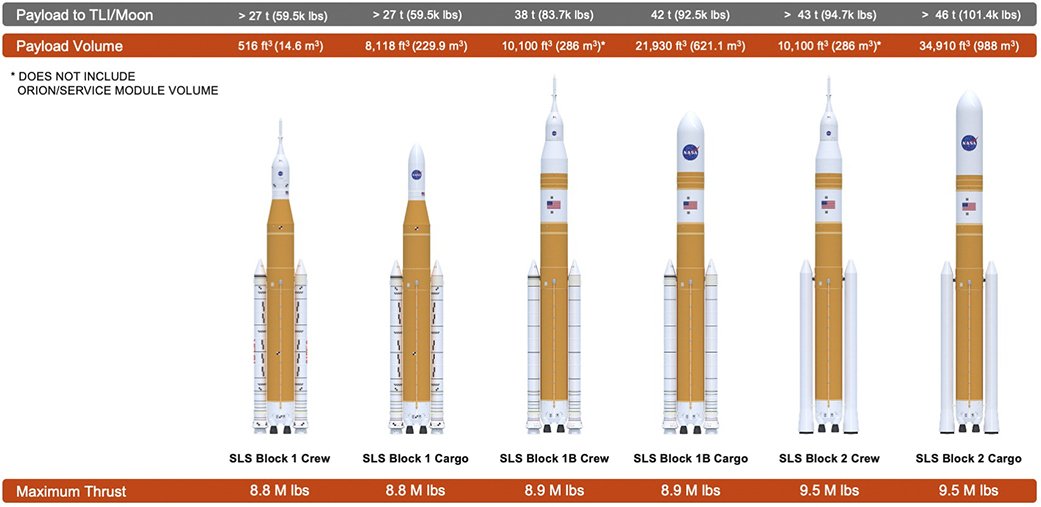
NASA designed the Space Launch System as the foundation for a generation of human exploration missions to deep space.
Credit: NASA
Engineers designed SLS to evolve into increasingly powerful configurations as its Artemis missions become more complex.
The first assembly, called “Block 1,” will use the central (orange) core booster with four main engines. It can send over 59,500 pounds to orbits beyond the moon. Additionally, a pair of solid rocket boosters and liquid fuel-fed engines will provide much of its thrust. After leaving Earth’s atmosphere, a final rocket booster — the Interim Cryogenic Propulsion Stage — sends the Orion capsule onward to the moon. This is the configuration NASA plans to use for the first three Artemis missions, including a moon landing.
Later missions, which will carry astronauts, will have a different rocket configuration, including the powerful Exploration Upper Stage. Known as “Block 1B,” this rocket design can transport crew and large amounts of cargo — up to 83,700 pounds.
The next iteration of SLS, aka “Block 2,” can provide 9.5 million pounds of thrust and will be the workhorse vehicle for sending cargo to the moon, Mars, and other deep-space destinations, an eight percent increase over Artemis I. This rocket will lift a whopping 101,400 pounds.
In the harsh places NASA astronauts are going, they’ll need bounties of supplies.
